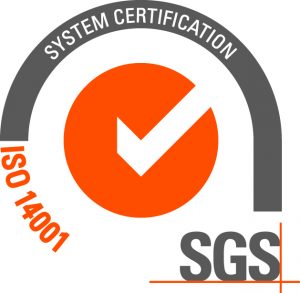ENVIRONMENTAL POLICY DECLARATION
Ostend-Bruges International Airport places a great deal of importance to environmental concerns and sustainable enterprise. We are convinced that the everyday, practical implementation of the principles of sustainable development and, as a consequence, adequate concern for the environmental component of an airport’s operation, are essential to the sustainable development of the airport. We therefore assess, from its very starting phase, the environmental and energy impact of any new project and keep this assessment in mind as the project progresses.
We opt for a structured, policy-based approach to environmental care. We are absolutely resolved to score even better and we will open our environmental approach to screening while we search for the best practices in the sector in order to keep the negative impact on the environment to an absolute minimum. The implementation of the ISO 14001 environmental management system is an important step in this regard. ISO 14001 is an international standard that imposes what requirements a good environmental management system needs to meet.
Since May 24th 2013 the airport of Ostend continuously received the ISO 14001 certificate. The most recent certificate is valid until 23th May 2028 and remains valid subject to satisfactory surveillance audits.
Download the certificate here.
Please click here to read the Environmental policy declaration of the airport.

NOISE CONTOURS
Just like road and railway traffic, air traffic causes noise emissions. The noise is mainly produced by aircraft landing and taking off at the airport. Each year, Ostend Airport has the noise contours calculated by a recognised expert of the KUL Leuven.
Please click here to consult the report Noise contours Ostend year 2024. (Dutch)
Noise monitoring system
The noise produced by aircraft can be continuously monitored by means of the noise monitoring system that was installed in 2002. This monitoring system consists of 4 measuring posts: 2 measuring posts on each side in the continuation of the runway.
Aerodrome Certificate – EASA
On August 25th, 2011 the Belgian Civil Aviation Authority issued to Ostend-Bruges International Airport the EASA Certificate – carrying the number BE.A-POR.0003. EU regulations (EC) No 2016/2008 and (EC) No 139/2014.
EASA Certificate
Airside traffic regulations
In order to avoid unsafe situations, special traffic regulations and procedures have been drawn up. They are based on national and international legislation, and intended to improve the safety of aircraft, passengers and staff.
Before driving any vehicle airside, you must take the special driving-test based on these traffic regulations. If you pass the test, you will receive an “airport driving licence” for Ostend-Bruges International Airport that allows you to drive in specific areas airside.
Airside Traffic Regulations
Safety policy
Safety is of the first importance of the International Airport Ostend-Bruges, an integral part of the Safety Management System (SMS).
Click here for more information about the safety policy.










